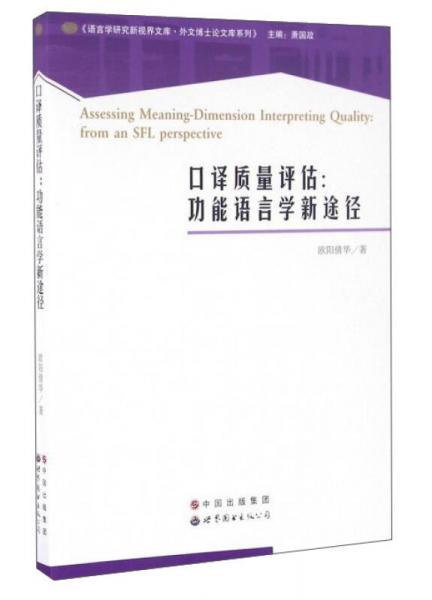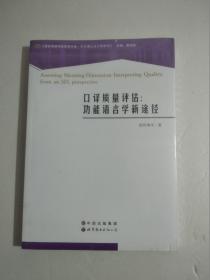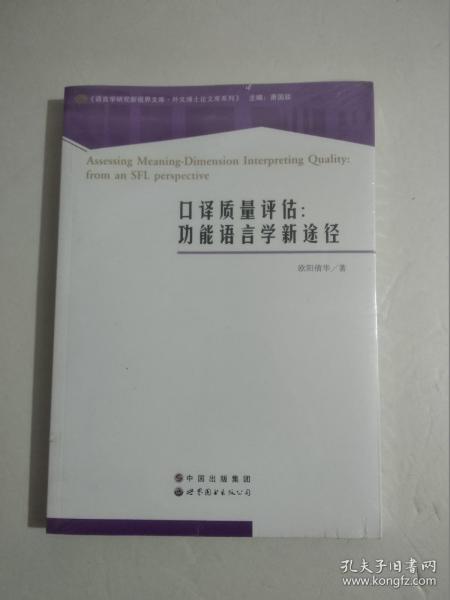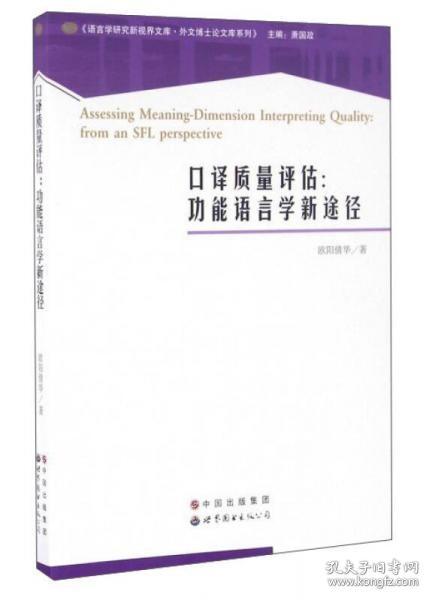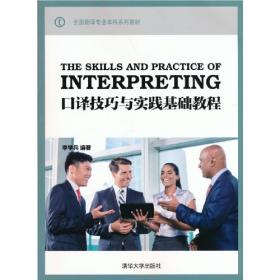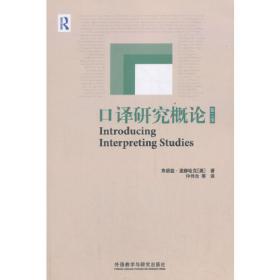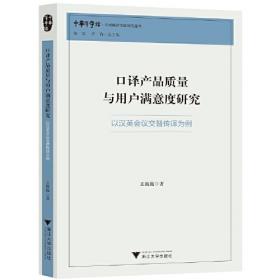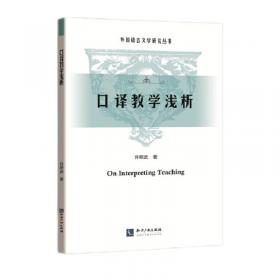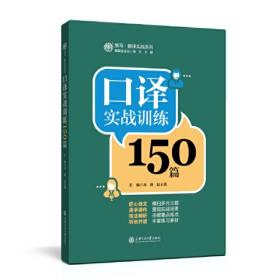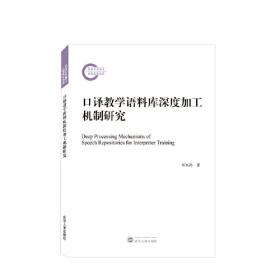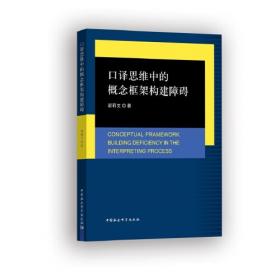口译质量评估:功能语言学新途径(英文版)
出版时间:
2015-09
版次:
1
ISBN:
9787519201807
定价:
42.00
装帧:
平装
开本:
16开
纸张:
胶版纸
页数:
198页
字数:
260千字
正文语种:
英语
9人买过
-
《口译质量评估:功能语言学新途径(英文版)》以系统功能语法对语言意义的分析为基本框架,与口译用户期待研究所总结的主要评估标准相结合,从准确性、恰当性和连贯性三个方面建构一个口译意义传递质量评估模型,并将所建模型应用于评估学生的英汉交替传译语料,以验证其适用性,并具体展示模型的使用步骤。 欧阳倩华,祖籍湖南,曾先后在广东外语外贸大学、澳门大学攻读学位,获文学学士、文学硕士及哲学博士学位。为国际翻译与跨文化研究协会(IATIS)会员、中国翻译协会会员、澳门翻译员联合会创会会员、广州翻译协会理事、广东外语外贸大学翻译学院口译系讲师、广外翻译学研究中心兼职研究员。主要研究方向为口译教学,口译质量评估及口译中的语篇分析。曾先后发表多篇论文,参与三部口译教材和口译词典的编写,目前主持两项口译研究相关科研项目。拥有多年国际会议传译经验,参加过数百场国际会议的交替传译和同声传译工作,服务对象包括政府部门、大型企业、使领馆、学术机构等。 Chapter 1 Introduction
1.1 Disciplinary background of the book
1.2 Challenges facing interpreting quality assessment and a possible solution
1.3 Research goals of the book
1.4 Research methods of the book
1.5 Organization of the book
Chapter 2 Defining consecutive interpreting in the context of interpreting teaching
2.1 Defining consecutive interpreting
2.2 The transfer of meaning in CI
2.3 Teaching consecutive interpreting
Chapter 3 Language meaning in interpreting: through the eyes of Systemic Functional Linguistics
3.1 SFL: an introduction
3.2 Language meaning: three metafunctions
3.3 SFL and translation quality assessment
Chapter 4 Interpreting quality assessment literature
4.1 Empirical studies on IQA
4.2 Common Criteria in interpreting assessment
4.3 Interpreting quality assessment models for the training purpose
4.4 Summary
Chapter 5 Status quo of IQA in the training setting
5.1 IQA from the eyes of students: the survey
5.2 IQA from the eyes of trainers: the interview
5.3 Summary
Chapter 6 Setting up the model
6.1 The issue of validity and reliability
6.2 Overview of the model
6.3 Implementation of the model
6.4 Pilot application of the model
6.5 Summary
Chapter 7 SFL based quality assessment of students'interpretation
7.1 Data collection and corpus building
7.2 Assessing C-E interpreting
7.3 Assessing E-C interpreting
7.4 Summary
Chapter 8 SFL based assessment and interpreting teaching
8.1 Use the assessment results in interpreting teaching
8.2 Notes on model application
8.3 Summary
Chapter 9 Conclusion
Appendix I Transcription of source speech of C-E Interpreting
Appendix Ⅱ Transcription of source speech of E-C Interpreting
Appendix Ⅲ Lexicogrammatical analysis of the C-E ST
Appendix Ⅳ Lexicogrammatical analysis of the E-C ST
References
Postscript
-
内容简介:
《口译质量评估:功能语言学新途径(英文版)》以系统功能语法对语言意义的分析为基本框架,与口译用户期待研究所总结的主要评估标准相结合,从准确性、恰当性和连贯性三个方面建构一个口译意义传递质量评估模型,并将所建模型应用于评估学生的英汉交替传译语料,以验证其适用性,并具体展示模型的使用步骤。
-
作者简介:
欧阳倩华,祖籍湖南,曾先后在广东外语外贸大学、澳门大学攻读学位,获文学学士、文学硕士及哲学博士学位。为国际翻译与跨文化研究协会(IATIS)会员、中国翻译协会会员、澳门翻译员联合会创会会员、广州翻译协会理事、广东外语外贸大学翻译学院口译系讲师、广外翻译学研究中心兼职研究员。主要研究方向为口译教学,口译质量评估及口译中的语篇分析。曾先后发表多篇论文,参与三部口译教材和口译词典的编写,目前主持两项口译研究相关科研项目。拥有多年国际会议传译经验,参加过数百场国际会议的交替传译和同声传译工作,服务对象包括政府部门、大型企业、使领馆、学术机构等。
-
目录:
Chapter 1 Introduction
1.1 Disciplinary background of the book
1.2 Challenges facing interpreting quality assessment and a possible solution
1.3 Research goals of the book
1.4 Research methods of the book
1.5 Organization of the book
Chapter 2 Defining consecutive interpreting in the context of interpreting teaching
2.1 Defining consecutive interpreting
2.2 The transfer of meaning in CI
2.3 Teaching consecutive interpreting
Chapter 3 Language meaning in interpreting: through the eyes of Systemic Functional Linguistics
3.1 SFL: an introduction
3.2 Language meaning: three metafunctions
3.3 SFL and translation quality assessment
Chapter 4 Interpreting quality assessment literature
4.1 Empirical studies on IQA
4.2 Common Criteria in interpreting assessment
4.3 Interpreting quality assessment models for the training purpose
4.4 Summary
Chapter 5 Status quo of IQA in the training setting
5.1 IQA from the eyes of students: the survey
5.2 IQA from the eyes of trainers: the interview
5.3 Summary
Chapter 6 Setting up the model
6.1 The issue of validity and reliability
6.2 Overview of the model
6.3 Implementation of the model
6.4 Pilot application of the model
6.5 Summary
Chapter 7 SFL based quality assessment of students'interpretation
7.1 Data collection and corpus building
7.2 Assessing C-E interpreting
7.3 Assessing E-C interpreting
7.4 Summary
Chapter 8 SFL based assessment and interpreting teaching
8.1 Use the assessment results in interpreting teaching
8.2 Notes on model application
8.3 Summary
Chapter 9 Conclusion
Appendix I Transcription of source speech of C-E Interpreting
Appendix Ⅱ Transcription of source speech of E-C Interpreting
Appendix Ⅲ Lexicogrammatical analysis of the C-E ST
Appendix Ⅳ Lexicogrammatical analysis of the E-C ST
References
Postscript
查看详情
-
全新
北京市丰台区
平均发货11小时
成功完成率96.45%
-
九五品
北京市海淀区
平均发货5小时
成功完成率96.34%
-
2015年 印刷
九五品
北京市海淀区
平均发货6小时
成功完成率88.68%

 占位居中
占位居中

